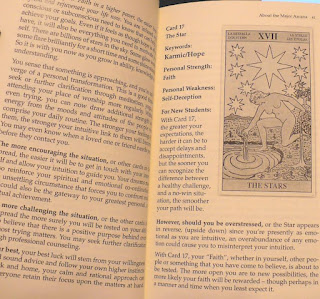Paperback: 264 pages
Llewellyn Publications (April 8, 2012)
ISBN-10: 0738727849
ISBN-13: 978-0738727844
Product Dimensions: 8.9 x 5.9 x 0.9 inches
“Bring power, precision, and depth to your tarot readings with this helpful and easy-to-use tarot book. It presents techniques usually found only in workshops, plus nearly seventy different themed spreads so you can choose or create the perfect spread for any question or purpose.
Tarot expert Barbara Moore explains what makes a great tarot spread and why, including how the principles of design and psychological response play a part. In addition to simple techniques that will make your readings more fun and more accurate, you will discover new ways to help you create a reading style that is all your own.”

THE AUTHOR
Author of Tarot for Beginners and several guidebooks for tarot kits, Barbara Moore has studied and taught tarot methodology for more than two decades. Barbara lives in Minnesota, teaches and speaks at tarot conferences around the world, and writes for Llewellyn.com’s popular tarot blog. Visit her online at www.PracticalTarotReadings.com.
BASIC INFORMATION / APPEARANCE, SIZE, QUALITY / ART
This 264-page paperback measures 8.9 x 5.9 x 0.9 inches. The cover features cards from the Lo Scarabeo Tarot by Lo Scarabeo, with artwork by Anna Lazzarini. Paper is white; text is black. Graphics are gray, black, and white.
Following the Table of Contents is a list of the spreads included in the book – a very welcome sight. The alternative – putting the list as an “index” at the back – would have been slightly annoying. Next comes an Introduction, followed by seven chapters:
- Tarot Spread Basics
- Design Principles and Layouts
- A Collection of Spreads
- Techniques to Add to Any Spread
- How to Modify Spreads
- Do-It-Yourself Spread Design
- How to Do a 78-Card Reading
- Conclusion
- Spread Cross-References (an especially helpful section that organizes the spreads by purpose, such as “Achieving a Goal,” “Advice,” and “Decision Making”)
- Annotated Reading List
- Appendix A: Curious Old Spreads
- Appendix B: Elemental Dignities
- Appendix C: Significators
In the first Chapter – “Tarot Spread Basics” – Moore mentions the importance of determining what beliefs, style, and techniques will influence and infuse our readings. We are encouraged to ask ourselves questions about our beliefs such as:
- Is the future predetermined?
- Is it possible to read for someone who isn’t present?
- Where do the messages in a tarot reading come from?
I found the chapter on Design Principles and Layouts to be a refreshingly logical, practical approach to readings. Moore discusses topics such as Emphasis or Balance, Symmetry, Spacing, and Repetition. The Celtic Cross spread is a good example of how crossed cards draw the eye first, while the four cards surrounding them add balance. The vertical line of cards to the right feels separate and not as important. Design principles can be seen “in action” in single card spreads, pairs, line, bridge, grid, triangle, cross, and circle layouts. As the icing on the cake, Moore demonstrates how these principles would be used in reading specific cards in a Celtic Cross spread.
Within the Collection of Spreads chapter are subsections titled “Traditional Spreads,” “General Spreads,” “Yes/No Spreads,” “Love and Romance Spreads,” “Readings About Money,” “Health Spread,” and “Special Spreads.”
 Modifications to spreads might include changing the focus, positional meanings, layout, number of cards, and/or technique(s).
Modifications to spreads might include changing the focus, positional meanings, layout, number of cards, and/or technique(s).I especially enjoyed the section on using quotations as a technique or inspiration for creating your own spreads. Moore notes that others have written about and used this technique, including James Ricklef and Rachel Pollack. The first step is to break up the quotation into positions. Next, create a layout that makes sense with both the quote and positions. As an example, Moore quotes Winston Churchill, who said:
“The positive thinker sees the invisible,
Feels the intangible, and achieves the impossible.”
Moore then details how she created a spread based on this quotation with the following positional definitions: (1) Project, (2) Thinking, (3) The Invisible, (4) The Intangible, and (5) The Impossible.
I recommend this book for people with all levels of Tarot experience and expertise. Even if you have been reading the cards for a long time, I can almost guarantee that you’ll find something you had not thought of before or something you will be eager to try. I plan to devote a blog entry to the quotations technique in which I will follow the steps Moore outlines.
-----------------------------










































